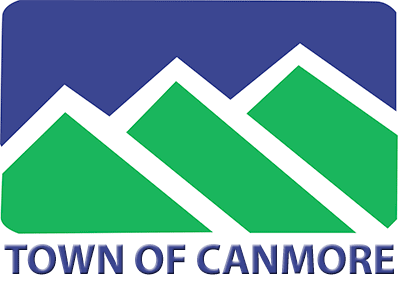Town of Canmore Offers Sweeper Location Notification via GPS |
|
by Ranger Kidwell-Ross Those tasked with reducing storm water runoff pollution are in widespread agreement that moving parked vehicles on sweeping days is critical to obtaining the best results. However, political considerations that stem from citizens are still a major deterrant to forced vehicle moving in many locales.

Canmore is a town of 14,000 nestled just inside Canadian Rockies, located in Alberta, Canada. After reading that the city now offered real time monitoring of its snowplow fleet and plans to roll out real-time GPS monitoring for its sweeper fleet next fall, we contacted Don Staple, Canmore's Supervisor of Streets & Roads.
The reason Canmore went to GPS in its sweepers as well as providing the tracking system was both for efficiency and best route management. Staple said that when they were putting the system together, the service provider for our GPS system described to them a service generally referred to as '511: Where's my snowplow?' "This is a system where residents can log on and view where the plows currently are," said Staple, "as well as where they've been and the level of service that's provided. This is all shown via a color coding of the streets on the maps. The idea intrigued us and we not only went with it on our plows but are including it on our street sweepers. The 'Where's my street sweeper' information will be provided to the public starting in the fall of 2015. "The street sweeping information will cover the most recent 16 hours of street sweeping. It will show where the sweeper is currently, where the sweeper was in the last two hours; four hours; eight hours and, finally, the last 16 hours. This is indicated on the map by coloring of the streets. In our case, it's going from gray for the last 16 hours to green, which is the most recent about two hours." The GPS system Canmore has on its sweepers additionally has the full array of data collection, including speed traveled, direction, brooms up/down, brooms on/off and more. For those who might want to know more about Canmore's specific system, the GPS provider company is called WebTech Wireless.
"Our signage goes up five days ahead of time," said Staple. "This gives everyone ample opportunity to move their vehicle. If a vehicle is still on the road when the time comes they do get towed. [Moving the vehicles] is the way we can do a better job and reduce our 're-dos,' which are very costly. We've found that when we weren't towing, the other residents in an area became very frustrated with their neighbors who were keeping their vehicles on the street – and we hear about it.
In the accompanying audio interview between Don Staple and WorldSweeper's editor, Ranger Kidwell-Ross, the discussion also includes the concept of adapting the software to provide smart phone alerts as to where the sweeper is, as an aid to their vehicle removal program. With real-time GPS monitoring, it would appear that the next logical step would be to allow people to download an app that allowed them to plug in their address and then get a notification when the sweeper was approaching and when it had passed their location. A complaint that is widespread currently is that parking restrictions are often 4 - 6 hours in length. In our increasingly crowded world, finding an alternative parking area for that length of time – and sometimes for any length of time – can pose a real challenge. Further, the internet has many stories of people who received tickets because they re-parked their cars after the sweeper had passed. They naturally thought it would be okay, since the sweeper had gone by, but many if not most city police forces ticket during the posted hours, disregarding that the reason for the posting has gone by. Implementation of a phone app would allow the city to make its citizens happier about parking restrictions by having them implemented only in the necessary timeframe for the sweeper to do its job. Residents that were home could receive an alert when the sweeper was approaching and, perhaps, even just drive around the block or go do some quick shopping until the sweeper passed. The city could still ticket-and-tow for parking violations, but would do so in advance of the sweeper's approach but not after it had passed. As a result of our conversation, Staple said he will investigate whether or not the software company might be able to implement this type of app system and what the costs might entail. Their current GPS tracking ability includes an update on the sweeper's location every 10-to-15 seconds, so the data would seem to be available for such a system. The technical challenge would seem to not be as difficult to surmount as what the cost for doing so might be. "We're aware of the impacts of our daily operations and always searching for new ways to reduce and mitigate those impacts on our surroundings and on our people," concluded Staple. "Our city managers have the big picture of where we are located and understand that there is a widely held image of a pristine environment. We are trying to maintain that." You may reach Don Staple via email sent to DStaple@canmore.ca. The Town of Canmore's website is located at www.canmore.ca.
|
© 2005 - 2021World Sweeper
|
Street Contents
|